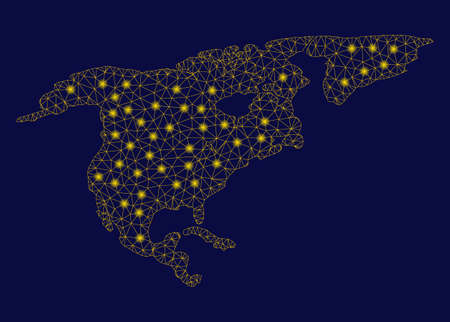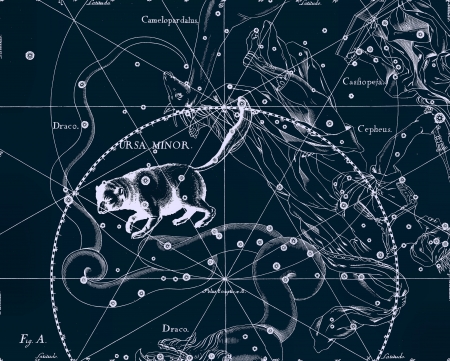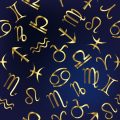Introduction: Ancient Roots of Astrology
The story of astrology begins in the fertile plains of ancient Mesopotamia, where the Babylonians laid the groundwork for one of humanity’s oldest systems of celestial observation. Dating back to at least the second millennium BCE, Babylonian astrologers meticulously recorded the movements of the stars and planets, seeking patterns that could inform earthly affairs—from royal decisions to agricultural cycles. This early astrology was deeply woven into the fabric of daily life and governance, reflecting a worldview in which the heavens and earth were intimately connected.
As centuries passed, these Babylonian traditions migrated westward, merging with the intellectual currents of the Greco-Roman world. The Greeks infused astrology with philosophical rigor, introducing concepts such as the zodiac and planetary rulerships. Later, Roman society adopted and adapted these practices, embedding them within their own cultural and administrative structures. Through this fusion, astrology evolved from a priestly art into a sophisticated discipline that shaped medicine, politics, and personal fate.
This cross-cultural transmission set the stage for astrology’s eventual journey to Britain. As we trace its path through time and across empires, it becomes clear that astrology’s enduring appeal lies in its ability to bridge cosmic order and human experience—a legacy that would ultimately find new expression on British soil.
2. Channels of Transmission to Britain
The journey of Babylonian and Greco-Roman astrology to ancient Britain was far from straightforward, involving a complex web of trade routes, military conquests, and cultural exchanges. Early contact between the Mediterranean world and the British Isles was primarily facilitated by the expansionist ambitions of the Roman Empire, but earlier interactions through trade should not be overlooked.
Trade Routes and Commercial Exchanges
Long before the Roman invasion, goods and ideas travelled across Europe via overland and maritime trade routes. The Phoenicians, renowned for their seafaring skills, are believed to have traded tin with the peoples of Cornwall. Such commercial interactions often acted as conduits for the transmission of foreign concepts, including astrological practices. Traders, merchants, and craftsmen carried not only material goods but also snippets of knowledge and belief systems embedded in daily life.
| Channel | Origin | Route | Impact on Astrology Transmission |
|---|---|---|---|
| Phoenician Maritime Trade | Eastern Mediterranean | Mediterranean Sea → Atlantic Coast → Cornwall | Introduced early Eastern concepts, including astronomy/astrology basics |
| Overland Celtic Networks | Central Europe | Danube Basin → Gaul → Southern Britain | Facilitated cultural blending and movement of ideas westwards |
| Roman Conquest & Occupation | Italy (Rome) | Gaul → Britannia (via English Channel) | Brought Greco-Roman astrological texts and practices directly to Britain |
Conquests and Political Integration
The most significant leap in the transmission process came with Julius Caesar’s expeditions in 55–54 BCE and especially after Claudius’ successful invasion in 43 CE. As Roman governance took root in Britannia, so too did Roman culture. With legionaries, administrators, and settlers came an influx of written materials—some translated from Greek or Latin originals containing astrological doctrines rooted in Babylonian traditions. Astrology was popular among both elite Romans and soldiers seeking omens or personal guidance.
Cultural Interactions: Local Adaptations and Syncretism
Cultural exchange did not simply mean passive adoption; rather, there was a process of adaptation as local Britons engaged with these imported beliefs. Astrological symbols began to appear alongside native iconography on artefacts such as mosaics and coins. The mingling of Druidic traditions with Greco-Roman astrology occasionally resulted in unique interpretations that reflected British priorities and cosmologies.
Summary Table: Key Agents in Astrological Knowledge Transfer to Ancient Britain
| Agent/Group | Main Activity/Role | Astronomy/Astrology Contribution |
|---|---|---|
| Phoenician Traders | Tin trading with Cornwall | Brought eastern astronomical concepts westward |
| Celtic Tribes | Cultural mediation & trade | Blended continental traditions with local beliefs |
| Roman Military & Settlers | Colonisation & administration | Imported Greco-Roman astrological texts and practitioners |
The transmission of astrology into ancient Britain was thus a product of overlapping commercial networks, imperial ambitions, and dynamic cultural encounters that shaped how these celestial sciences were received and reinterpreted on British soil.

3. Adoption and Adaptation by Celtic and Roman Britain
The transmission of astrological knowledge into Ancient Britain was far from a simple act of cultural import; it was a dynamic process shaped by the interactions between native Britons and incoming Roman settlers. Before the Roman conquest, Celtic tribes in Britain had their own complex cosmologies, focusing on the cycles of nature, lunar phases, and sacred sites aligned with celestial events. The arrival of Greco-Roman astrology did not erase these traditions; instead, it initiated a gradual blending and reinterpretation.
As Roman influence expanded after AD 43, astrology became more accessible through texts, artefacts, and itinerant practitioners. The educated elite—both Roman officials and assimilated Britons—were particularly receptive to Greco-Roman astrological methods. They adopted planetary hours, horoscopes, and divinatory practices alongside their traditional beliefs. Archaeological finds, such as inscribed tablets from Bath or astrologically themed mosaics in villas, suggest that astrological ideas were being woven into both public life and private ritual.
However, adaptation was not uniform across Britain. In urban centres like Londinium (London) or Eboracum (York), where Roman culture thrived, astrology often accompanied other innovations such as writing and medicine. Meanwhile, in rural or peripheral regions, indigenous interpretations persisted; for example, local deities were sometimes associated with classical planets or constellations in an attempt to harmonise old beliefs with new ideas.
This syncretism produced a uniquely British form of astrology—a fusion of Babylonian calculation techniques, Greco-Roman symbolism, and Celtic reverence for the land and sky. Rather than passive recipients, Britons actively engaged with astrological knowledge, selecting elements that resonated with their worldview and adapting foreign concepts to local needs. This pragmatic approach ensured astrology’s survival well beyond the end of Roman rule in Britain.
4. Material Evidence and Written Records
The transmission of Babylonian and Greco-Roman astrology to ancient Britain is substantiated by a growing body of material evidence and written records unearthed across the British Isles. Archaeological excavations, particularly at former Roman settlements such as Londinium (London), Bath, and Vindolanda near Hadrian’s Wall, have yielded artefacts and inscriptions that bear witness to the integration of astrological concepts into local culture. Analysis of these finds reveals not only the diffusion of astrological knowledge but also its adaptation to the distinct context of Roman Britain.
Archaeological Finds: Artefacts with Astrological Symbols
Several objects from Romano-British contexts display unmistakable astrological motifs. Notably, engraved gemstones, known as intaglios, often depict zodiacal signs and planetary deities. These items, frequently set in rings or worn as amulets, suggest personal engagement with astrological beliefs among both Romans and native Britons.
| Artefact Type | Location Found | Astrological Features | Date Range |
|---|---|---|---|
| Engraved Gemstone Intaglio | Londinium (London) | Zodiac symbols (e.g., Capricorn, Aries) | 2nd–3rd c. CE |
| Bronze Disc | Bath | Schematic zodiac wheel | Late 2nd c. CE |
| Mosaic Pavement Fragment | Chedworth Villa, Gloucestershire | Depiction of celestial bodies and signs | 4th c. CE |
| Lead Curse Tablet (Defixio) | Uley Shrine, Gloucestershire | Astral invocations to planetary gods | 3rd–4th c. CE |
Inscriptions and Manuscripts: Written Testimony of Astrological Practice
The epigraphic record further supports the presence of astrology in Britain during the Roman era. Latin inscriptions sometimes include dedications to Sol Invictus (the Unconquered Sun) or Mercury—both central figures in Greco-Roman astrological systems. Occasionally, fragments of horoscopes or astrological calculations inscribed on wax tablets have surfaced at military sites like Vindolanda. Although rare, these manuscripts provide direct evidence for the practical application of imported Babylonian and Greco-Roman astrological knowledge by individuals stationed in or travelling through Britain.
Key Written Records Documenting Astrology in Britain:
- Vindolanda Tablets: Wax tablets with references to favourable celestial omens for military campaigns.
- Dedicatory Inscriptions: Stone altars inscribed with appeals to planetary deities for protection or fortune.
- Papyrus Fragments: Imported from continental Europe, containing excerpts from Greek astrological manuals used by local practitioners.
- Mosaics and Wall Paintings: Occasional representations of zodiac cycles in domestic settings, hinting at popular awareness.
Cultural Integration and Local Adaptation
This material corpus demonstrates not only the importation but also the assimilation of astrological thought within local religious and social practices. The fusion of classical astrology with indigenous beliefs created a uniquely Romano-British expression of cosmic order—a testament to the enduring legacy of Babylonian and Greco-Roman traditions on British soil.
5. Impact on Local Beliefs and Society
The arrival of Babylonian and Greco-Roman astrology in ancient Britain brought about subtle yet significant changes to local beliefs and social practices. While the indigenous Britons had their own systems for interpreting natural phenomena, the introduction of astrological concepts gradually permeated various aspects of daily life. Astrology became increasingly intertwined with religious rituals, as priests and druids began to incorporate celestial observations into their ceremonies. This blending of traditions can be seen in archaeological sites where alignments with stars and planets suggest a fusion of native and imported cosmologies.
In terms of governance, rulers in Roman Britain were often keen to employ astrologers, seeking guidance on matters of state, military campaigns, and succession. The belief that the heavens could foretell political fortunes added a new dimension to leadership, with some leaders using favourable omens to legitimise their authority. This practice mirrored developments in Rome itself but took on distinct characteristics as it merged with local customs.
Medicine was another domain profoundly affected by astrological thought. Roman medical practitioners in Britain frequently consulted planetary positions when diagnosing illnesses or prescribing treatments, adhering to the humoral theories that linked bodily health with celestial influences. Over time, these methods filtered down to folk healers, who adapted them into their own remedies and charms, further embedding astrology within everyday practices.
Perhaps most notably, astrology offered individuals a novel framework for understanding fate and personal destiny. Horoscopes began to circulate among the elite, providing interpretations that shaped decisions about marriage, travel, and business ventures. Even though widespread literacy was limited, oral transmission ensured that astrological ideas reached broader segments of society, subtly influencing attitudes towards luck and misfortune.
Ultimately, the transmission of Babylonian and Greco-Roman astrology did not erase indigenous British beliefs but instead fostered a dynamic interplay between old and new ways of seeing the world. This exchange contributed to a uniquely British approach to the stars—one that would endure long after the decline of Roman rule.
6. Legacy and Lasting Influence
The enduring legacy of Babylonian and Greco-Roman astrology in ancient Britain is a testament to the profound cultural exchanges that shaped British intellectual traditions. While the mystical frameworks of Mesopotamia and the analytical approaches of classical Mediterranean societies may seem distant from Britain’s windswept isles, their transmission left discernible marks on local customs, scholarly pursuits, and even language. Over time, as Roman occupation facilitated exposure to continental knowledge, British elites began to integrate astrological concepts into their own worldviews, particularly through literature, medicine, and religious practice.
Astrology in Medieval and Early Modern Britain
The most obvious legacy is seen in the way medieval British scholars—especially during the Anglo-Saxon and later Norman periods—adopted astrological texts translated from Latin and Greek originals. These works found their way into monastic libraries and academic curricula. The influence persisted through the Renaissance, with figures such as John Dee championing astrology as both an esoteric art and a scientific discipline. The Babylonian system of planetary hours, alongside Greco-Roman zodiacal lore, became embedded in British calendars, agricultural almanacs, and medical treatises.
Cultural Traces in Language and Folklore
Remnants of this astrological heritage remain visible in contemporary British English. Phrases like “under one’s star sign” or “it’s written in the stars” echo ancient beliefs about celestial determinism. Folk traditions surrounding Midsummer’s Eve or solstice celebrations also reflect a syncretic blend of native Celtic practices with imported astrological symbolism, especially regarding auspicious times for planting or harvest.
A Continuing Conversation
While modern science has largely displaced astrology as a mainstream explanatory system, the fascination with horoscopes, birth charts, and celestial events persists across Britain. In popular culture—from newspaper columns to television programmes—the vestiges of Babylonian and Greco-Roman astrology endure as both entertainment and a subtle nod to a shared European intellectual heritage. Ultimately, the transmission of these ancient systems helped lay the groundwork for centuries of British inquiry into the cosmos—a curiosity that continues to shape cultural identity today.


